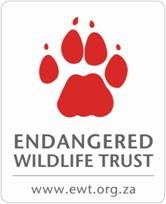Objection to Coal Mine Near Mapungubwe World Heritage Site | A media Release from The EWT
The Australian company Coal of Africa Limited (CoAL) recently announced that it had been awarded ‘unconditional new order mining rights’ for the Vele Coking Coal Project in Musina, Limpopo, by the South African Department of Mineral Resources. This despite the fact that the Environmental Impact Assessment (EIA) process on access and fuel storage for Vele is still under way and a water license has not been approved.
What’s more, no formal announcement to this effect has been issued to Interested & Affected Parties involved in this project. Mapungubwe National Park & World Heritage Site is managed by South African National Parks (SANParks) and its partners. The GMTCA is being developed based on the stipulations of a Memorandum of Understanding between Botswana, South Africa and Zimbabwe that was signed on 22 June 2006. These are officially mandated programmes in which the South African government, the province and private sector have invested.
With the official opening of the Mapungubwe National Park on 24 September 2004, the first of three national objectives for the region was reached. The other two objectives were the area’s listing as a World Heritage Site (done in 2003) and the establishment of a Transfrontier Conservation Area. Much time and financial investment went into these objectives and the World Heritage Site is expected to expand into Zimbabwe and Botswana.
A stakeholder group consisting of the Endangered Wildlife Trust, the Mapungubwe Action Group, the Office of the International Coordinator for the Greater Mapungubwe Transfrontier Conservation Area (GMTFCA) and Peace Parks Foundation objects to all industrial activity in that part of the very sensitive Limpopo Valley without an approved Integrated Regional Development Plan. Comments to that effect have been filed in the Vele EIA and Environmental Management Plan (EMP).
The stakeholder group asked for more information regarding the awarding of mining rights, but their request has to date been ignored. The stakeholder group supported an external review and independent assessment of the Environmental Management Plan for the proposed Vele mine, undertaken by the South African Institute for Environmental Assessment. This was done to get an independent, unemotional opinion on the EIA process and content quality, assessing amongst others, factors like bias and regional context. The assessment identified significant problem areas and fatal flaws, which were duly pointed out to Department of Minerals and Energy (DME), the Department of Water and Environmental Affairs and Interested & Affected Parties.
No feedback on any of the identified issues has been received yet. Another planned development next to Vele, the Mulilo Power Station, is currently undergoing an EIA. Anglo Coal has also completed prospecting on the same coal field adjacent to Mapungubwe and several mining companies including CoAL are active in the coal field north of the Soutpansberg.
As part of the official Transfrontier Conservation Area (TFCA) planning process, Peace Parks Foundation conducted a scientific, peer reviewed land use planning study of the larger Mapungubwe region, including an ecological and cultural sensitivity rating. This study proves without doubt that the area is extremely sensitive. The study was submitted to the Department of Water and Environmental Affairs and is available from Peace Parks Foundation. The stakeholder group strongly recommends that without an approved strategic regional plan for the Soutpansberg-Limpopo River region, no industrial development should be allowed.
It is however unclear who is responsible for cumulative impact assessment of industries and related infrastructure, water issues and the loss of jobs in the existing tourism sector in that region. Best practice environmental planning by mines should consider new legislation that states that the EIA process must consider cumulative impacts. However, the current process is running under the old legislation, which did not consider cumulative impacts.
The planned mine is situated next to the Mapungubwe National Park & World Heritage Site. It also falls within the broader Mapungubwe Cultural Landscape. The Kingdom of Mapungubwe is still under exploration by archeologists and carries the history of more than 50 000 years of human settlement. Stone Age humans and hunter-gatherers were followed by inhabitants of the iron-age, which saw the development of the Zhizo and Leopards Kopje people and conclusive evidence exists of these communities trading with far flung parts of the world. They pioneered farming, gold mining and the manufacture of gold ornaments and jewellery.

What eventually, in about 1220 AD, became the Kingdom of Mapungubwe is also inextricably linked with the dynasty of Great Zimbabwe. Peace Parks Foundation, Rupert Family Foundation, De Rothschild Foundation, De Beers, National Parks Trust and WWF-SA assisted SANParks by facilitating negotiations with landowners to either contract land or purchase properties to consolidate the core area of South Africa’s contribution to the proposed Greater Mapungubwe TFCA – the 30 000 ha Mapungubwe National Park.
The Mapungubwe Cultural Landscape, which follows the protected area footprint, was proclaimed a World Heritage Site in July 2003. Mapungubwe is home to the famous Golden Rhino – a symbol of the power of the King of the Mapungubwe people who inhabited the Limpopo River Valley between 900 AD and 1300 AD; at the time the largest kingdom on the subcontinent. The mine has the potential to bring all this to an end, threatening the World Heritage Site, the transfrontier conservation area and the tremendous tourism potential.
The presence of heavy industry in the area will impact enormously on its tourism and conservation, to such a degree that these activities will have to be reconsidered for the future. South Africa signed a binding document whereby it agreed to be a partner in a trilateral conservation development. By allowing that same conservation area to become part of an industrial area, it is not adhering to the spirit of that agreement.
Contact:
International Co-ordinator Greater Mapungubwe TFCA
Tel: +27 (0)12 4203030
Yolan Friedmann
CEO Endangered Wildlife Trust
Tel: +27 (0)11 486 1102



